A Chef’s Guide to Perfecting This Underrated Cut
The first time I cooked beef blade steaks, I nearly ruined them. Standing in my culinary school kitchen, I treated them like ribeyes—hot pan, quick sear, disastrous results. My instructor walked over, eyebrow raised, and said something I’ve never forgotten: “Not all steaks are created equal, but all steaks can be extraordinary.” Twenty years and countless restaurant services later, blade steaks with mushroom sauce remains one of my signature dishes.
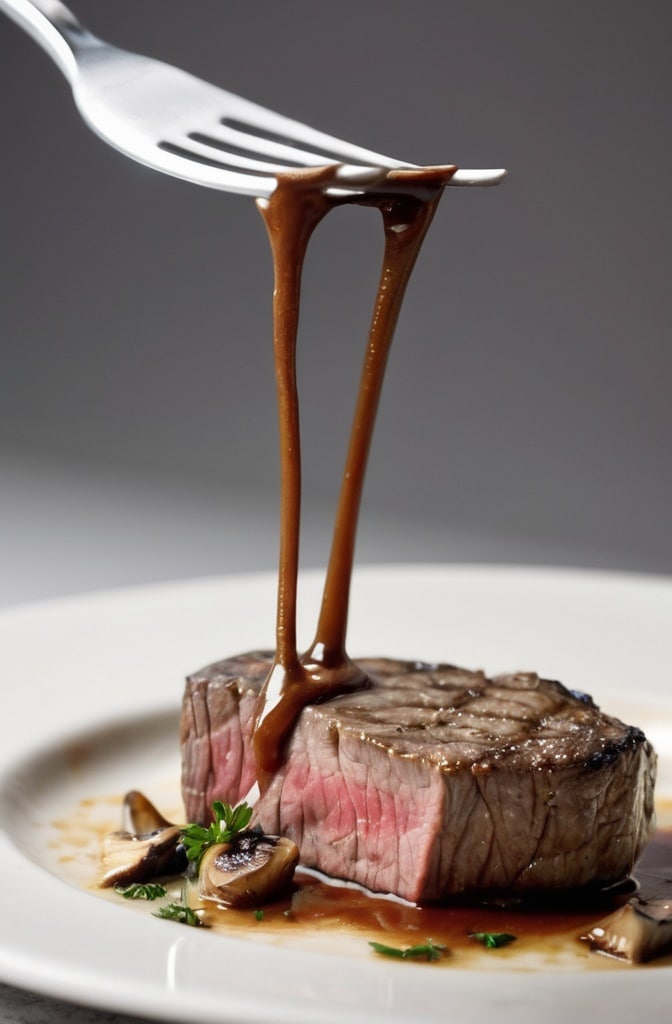
Beef blade steak might not enjoy the celebrity status of ribeyes or filets, but lemme tell you—this humble cut from the shoulder (chuck) region packs more flavor per dollar than almost any other beef option. What makes it special is the perfect balance of marbling, connective tissue, and that distinctive seam of gristle running through the center. When cooked properly, this anatomical peculiarity transforms into rich, gelatinous goodness that, paired with a deeply savory mushroom sauce, creates a dish worthy of any high-end steakhouse menu.
Ingredients & Substitutions
For the Blade Steaks:
- 4 beef blade steaks (about 8 oz each, ideally 1-inch thick)
- 2 tablespoons vegetable oil (can substitute avocado oil)
- 2 tablespoons unsalted butter
- 4 garlic cloves, peeled and smashed
- 2 sprigs fresh rosemary (or 1 tablespoon dried)
- Salt and freshly ground black pepper
- 1 teaspoon smoked paprika (optional but recommended)
When selecting blade steaks, look for pieces with consistent marbling throughout—those tiny white flecks are flavor bombs waiting to explode. Ideally, choose steaks that are at least an inch thick; anything thinner and you’ll struggle to achieve that perfect medium-rare while still breaking down the connective tissues. If blade steaks aren’t available, denver cuts or chuck eye steaks can work as decent substitutes, though they won’t have quite the same texture profile.
For the oil, I prefer vegetable or avocado due to their high smoke points. Olive oil is a no-go here—its lower smoke point means it’ll burn before your pan reaches ideal searing temperature. The butter adds richness, but if your serving dairy-sensitive guests, you can use ghee or simply increase the oil amount.
For the Mushroom Sauce:
- 1 pound mixed mushrooms (cremini, shiitake, oyster)
- 2 large shallots, finely diced (about ¼ cup)
- 3 garlic cloves, minced
- 2 tablespoons unsalted butter
- 1 tablespoon olive oil
- ¼ cup dry red wine (Cabernet Sauvignon works beautifully)
- 1 cup beef stock or broth (homemade prefered)
- 1 tablespoon Worcestershire sauce
- 1 tablespoon Dijon mustard
- ¼ cup heavy cream
- 2 teaspoons fresh thyme leaves
- Salt and black pepper to taste
Mushroom selection is crucial here. While white button mushrooms will technically work, they lack the depth and earthiness this sauce deserves. I recommend a mix of cremini (baby portobellos), shiitake (stemmed), and oyster mushrooms. This combination provides varied textures and a symphony of umami notes. For a truly luxurious version, throw in a few rehydrated porcini or morels—just a small handful will elevate your sauce to restaurant quality.
The wine deglazes the pan and adds acidity to balance the richness. If you prefer to cook without alcohol, substitute with 2 tablespoons of balsamic vinegar mixed with 2 tablespoons additional beef stock. For the beef stock itself, homemade is tremendous, but a good-quality low-sodium store-bought version will do in a pinch—just reduce it by half before using to intensify the flavor.
Step-by-Step Instructions
Preparing the Steaks
- Remove steaks from refrigeration at least 30 minutes before cooking to bring them to room temperature. This ensures even cooking throughout.
- Pat steaks completely dry with paper towels. Moisture is the enemy of a good sear, and trust me, we want that glorious Maillard reaction to work its magic undisturbed.
- Season generously with salt, pepper, and smoked paprika (if using). Don’t be shy here—blade steaks can handle robust seasoning. Press the seasonings firmly into the meat to ensure they adhere.
One common mistake home cooks make is under-seasoning. Remember that some salt will be lost during cooking, so you want to be generous without going overboard. I like to season from a height of about 8 inches above the meat to ensure even distribution. And always season both sides!
Cooking the Steaks
- Heat a heavy-bottomed skillet (cast iron is ideal) over high heat until it’s smoking hot. Add vegetable oil and swirl to coat.
- Carefully place steaks into the hot pan, laying them away from you to prevent oil splatter. Don’t crowd the pan—work in batches if necessary.
- Sear steaks for 3-4 minutes without moving them. Seriously, don’t fidget with them! A good crust is forming, and every time you move the steak, you interrupt that process.
- Flip steaks once, add butter, garlic cloves, and rosemary to the pan. Tilt the pan slightly and, using a spoon, baste the steaks with the aromatic butter for another 3-4 minutes.
- For medium-rare (recommended for this cut), cook until internal temperature reaches 135°F (57°C). This is where havng a good meat thermometer is worth it’s weight in gold.
- Transfer steaks to a cutting board and tent loosely with foil. Allow them to rest for at least 10 minutes. DO NOT SKIP THIS STEP! During resting, the meat’s temperature will rise another 5 degrees, and the juices redistribute throughout the steak
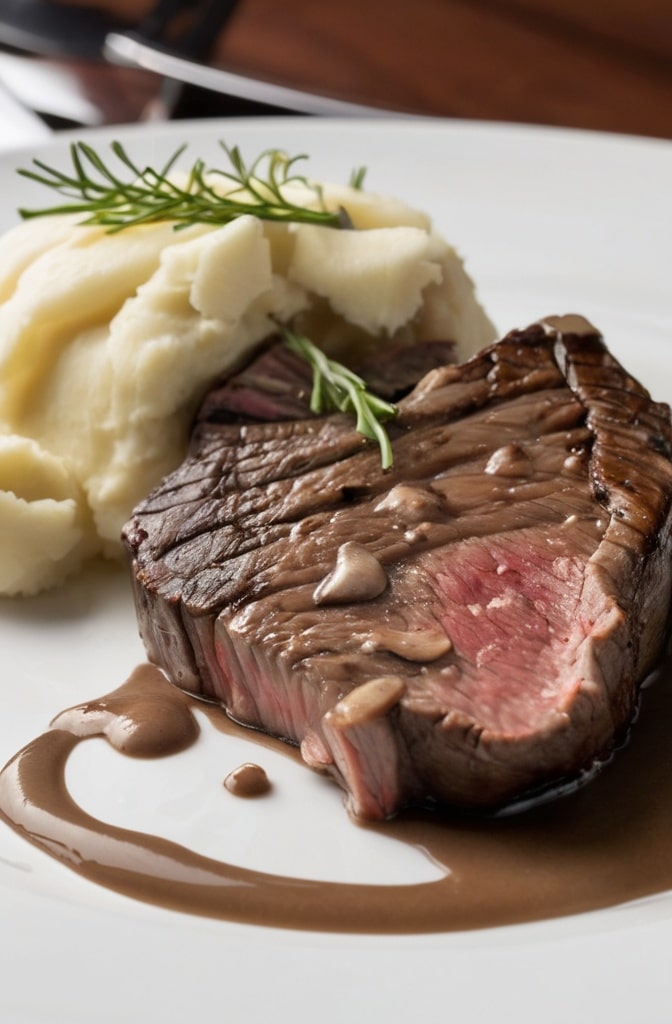
The most misunderstood aspect of cooking blade steaks is the resting period. While a filet might need just 5 minutes, blade steaks benefit from a longer rest to allow the connective tissues to relax and become tender. If you cut too soon, you’ll lose precious juices and end up with a tougher texture. I’ve had guests complain they were starving while waiting for the meat to rest, but even the hungriest ones have admitted the wait was worth it once they took that first tender bite.
Making the Mushroom Sauce
- While steaks are resting, pour off all but about 1 tablespoon of fat from the same pan. Return to medium heat.
- Add olive oil and butter. Once butter is melted, add mushrooms in a single layer. The key here is not to overcrowd—mushrooms release water when cooked, and if they’re piled up, they’ll steam rather than brown. Cook in batches if needed.
- Cook mushrooms without stirring for 2-3 minutes until they begin to brown. Then stir and continue cooking until golden and slightly reduced in size, another 3-4 minutes.
- Add shallots and garlic, cooking until fragrant and translucent, about 2 minutes. Keep an eye on the garlic—it burns easily and theres nothing worse than bitter, burnt garlic ruining your sauce.
- Pour in red wine and use a wooden spoon to scrape up all those flavorful brown bits (fond) from the bottom of the pan. This is where the magic happens! Reduce wine by half, about 2 minutes.
- Add beef stock, Worcestershire sauce, and Dijon mustard. Stir to combine and simmer until slightly thickened, about 5-7 minutes.
- Reduce heat to low and stir in heavy cream and thyme leaves. Simmer gently until sauce reaches desired consistency—it should coat the back of a spoon but still flow easily.
- Taste and adjust seasoning with salt and pepper as needed. The sauce should be rich, savory, and silky.
A common pitfall with mushroom sauces is overcooking after adding the cream, which can cause the sauce to break or develop a grainy texture. Once cream is added, keep the heat low and watch carefully. If sauce becomes too thick, thin with a splash of beef stock. Too thin? Mix a teaspoon of cornstarch with a tablespoon of cold water and stir it in.
Cooking Techniques & Science
What makes blade steaks uniquely challenging is their physical structure. That center seam of connective tissue (collagen) needs time and moisture to break down into gelatin, which is why a fast, high-heat approach alone—like you’d use for ribeye—won’t yield optimal results. Instead, we’re employing a hybrid method: first searing for flavor development through the Maillard reaction, then finishing with a gentler, butter-basting technique that provides both fat and moisture to help break down the tough fibers.
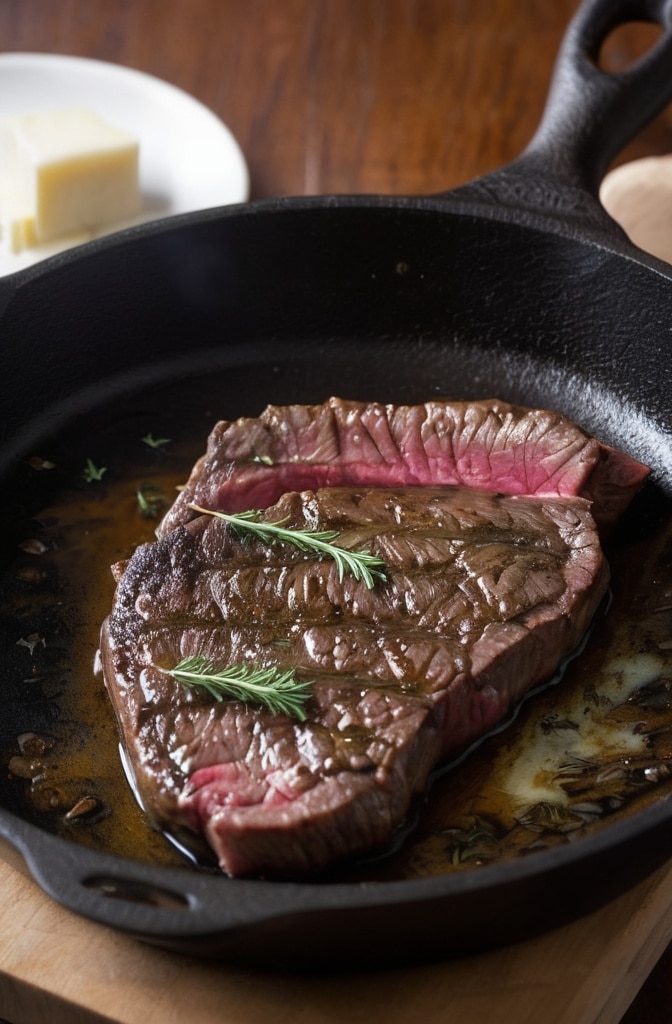
The mushroom sauce isn’t just a flavorful accompaniment—it’s strategically designed to complement the beef. Mushrooms contain natural glutamates, the compounds responsible for umami flavor. When paired with the beefy glutamates already present in the meat, you get what scientists call “umami synergy”—where the whole genuinely becomes greater than the sum of its parts. This is why steak and mushrooms have been paired together by chefs for generations.
The deglazing process with wine is crucial from both a flavor and efficiency standpoint. Those brown bits stuck to the pan after searing the steaks (the fond) contain concentrated flavor compounds that would otherwise be wasted. The acidity in the wine helps dissolve these bits while simultaneously adding its own complex flavor profile and cutting through the richness of the dish.
Temperature control is another critical factor. I recommend cooking blade steaks to medium-rare (135°F internal temperature) because this balance point provides enough heat to begin melting the connective tissue without overcooking the muscle fibers. If you go too rare, the collagen won’t break down enough; too well done, and the meat will become dry and tough despite the melted collagen.
Serving & Pairing Suggestions
For an impressive presentation, slice the rested steaks against the grain—this is absolutely non-negotiable with blade steaks. Cutting against the grain shortens the muscle fibers, making each bite more tender. Arrange slices on warmed plates (cold plates are the enemy of hot food), then generously spoon the mushroom sauce over and around the meat, allowing some to pool on the plate.
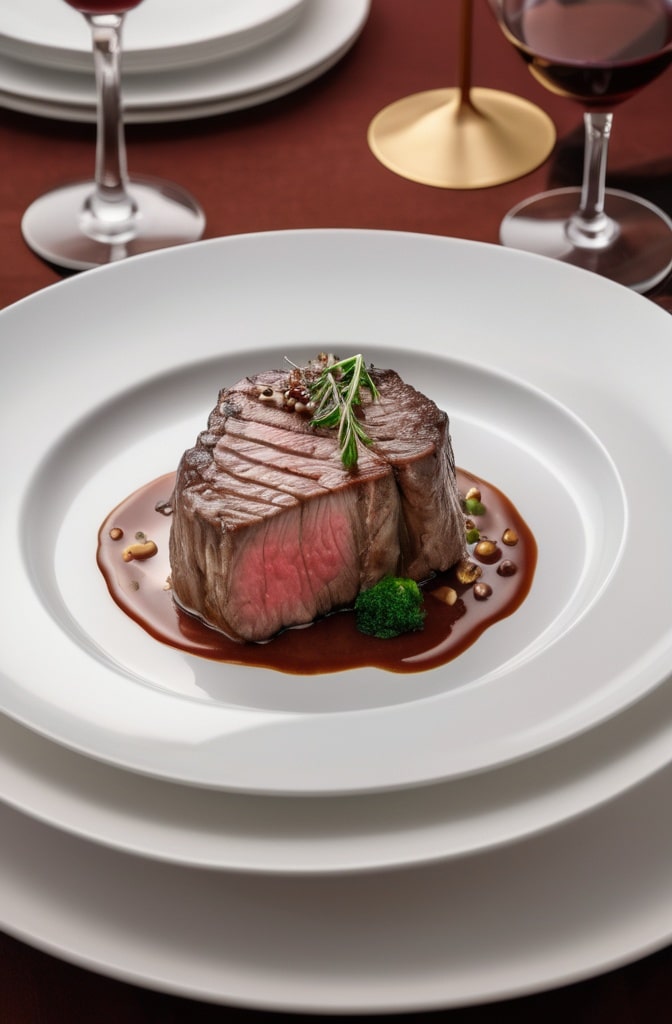
A sprinkle of fresh thyme leaves or finely chopped flat-leaf parsley adds a touch of color and freshness. I also like to finish with a light dusting of flaky sea salt just before serving—that textural contrast against the tender meat is chef’s kiss.
For side dishes, think about complementary textures and flavors. Creamy mashed potatoes make an excellent canvas for soaking up extra sauce, while roasted asparagus or haricots verts provide a welcome vegetal counterpoint to the richness of the meat. If you’re feeling ambitious, potato dauphinoise (thinly sliced potatoes baked with cream and garlic) elevates this humble cut to special-occasion status.
Wine pairing is where you can really have some fun with this dish. The robust flavors call for medium to full-bodied reds. A Syrah/Shiraz works beautifully, with its peppery notes complementing the beef. Malbec, with its dark fruit profile, stands up nicely to the mushrooms. For something less expected but equally delightful, try a Monastrell (Mourvèdre) from Spain—its earthy character echoes the mushrooms wonderfully.
For non-alcoholic options, a black tea with bergamot notes (like Earl Grey) serves as a surprising and sophisticated pairing that cuts through the richness while complementing the sauce’s herbaceous elements.
Conclusion
Beef blade steaks with mushroom sauce embodies what I love most about cooking—transforming something humble into something extraordinary through understanding and technique. This dish proves that “premium” isn’t always about price; sometimes it’s about the knowledge to unlock potential.
The key takeaways: respect the cut’s unique structure by cooking to medium-rare; don’t rush the process, especially the resting period; and invest time in developing a proper mushroom sauce that complements rather than masks the beef’s inherent flavors.
If you’re entertaining guests, this dish offers tremendous value—delivering steakhouse flavor and an impressive presentation without breaking the bank. It also teaches valuable techniques applicable to other tough-but-flavorful cuts like chuck eye, denver cuts, or even certain parts of the round.
I’ve served this at everything from casual family dinners to multi-course tasting menus, and it never fails to elicit that moment of surprised delight when diners realize they’re eating what was once considered a “budget” cut. If that isn’t the essence of good cooking—transforming the ordinary into the extraordinary through skill and understanding—I don’t know what is.
Frequently Asked Questions?
Can I use a different cut of beef if blade steaks aren’t available?
Denver cuts or chuck eye steaks make excellent substitutes as they come from the same general area of the animal. Short ribs (boneless) can also work but may require slightly longer cooking. Avoid leaner cuts like sirloin or tenderloin—they lack the connective tissue that makes this dish special.
My sauce separated after adding the cream. How can I fix it?
This typically happens when the pan is too hot when cream is added. Remove from heat immediately and whisk in 1-2 ice cubes until the sauce comes back together. To prevent this issue, always reduce heat to low before adding cream and consider tempering the cream by mixing in a bit of the hot sauce before adding the cream to the pan.
Can I make this dish ahead of time for a dinner party?
Yes, with some modifications. Cook the steaks slightly less than your desired doneness, then cool completely. Make the sauce fully and refrigerate separately. About 20 minutes before serving, bring steaks to room temperature, then reheat them gently in a 275°F oven until they reach an internal temperature of 120°F. Meanwhile, reheat the sauce on low, then finish the steaks in a hot pan with butter as directed in the original recipe.
How do I know where the grain is to cut against it?
Look closely at the muscle fibers in the meat—they run in parallel lines (the “grain”). You want to cut perpendicular to these lines, not parallel to them. If you’re unsure, make a small test cut in one corner of the steak. If you see long strands of fiber on the cut surface, rotate your knife 90 degrees and try again.
Why does my mushroom sauce always turn out watery?
Three common causes: overcrowding the pan when cooking mushrooms (they need space to brown rather than steam), not reducing the liquids sufficiently before adding cream, or not cooking the sauce long enough after everything is combined. Remember that the sauce will thicken slightly as it cools, but it should already coat the back of a spoon before you remove it from heat.
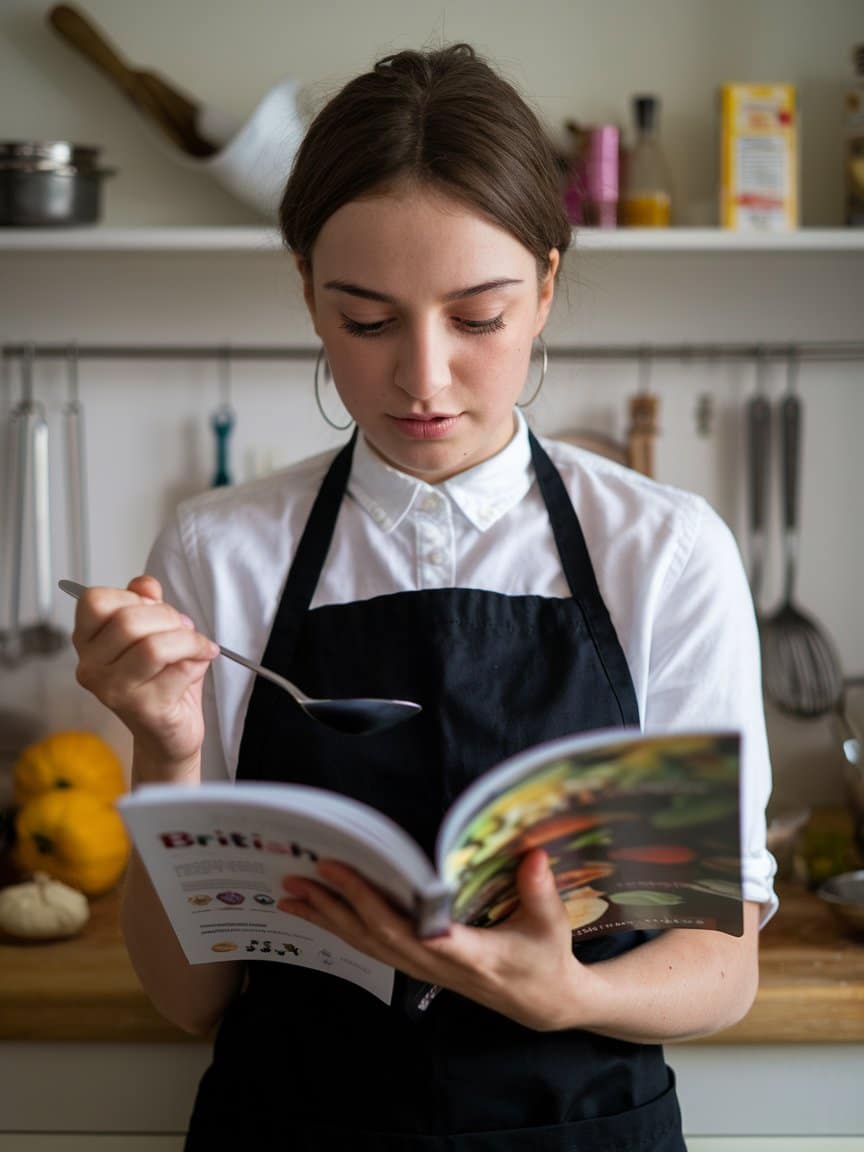
Veronica is a passionate food enthusiast with over three years of experience in exploring and writing about diverse cuisines. Her expertise lies in reviewing restaurants, sharing creative recipes, and discovering the latest food trends. As the voice behind FoodieRecap.com, Anju brings fresh perspectives and culinary insights to her audience.
